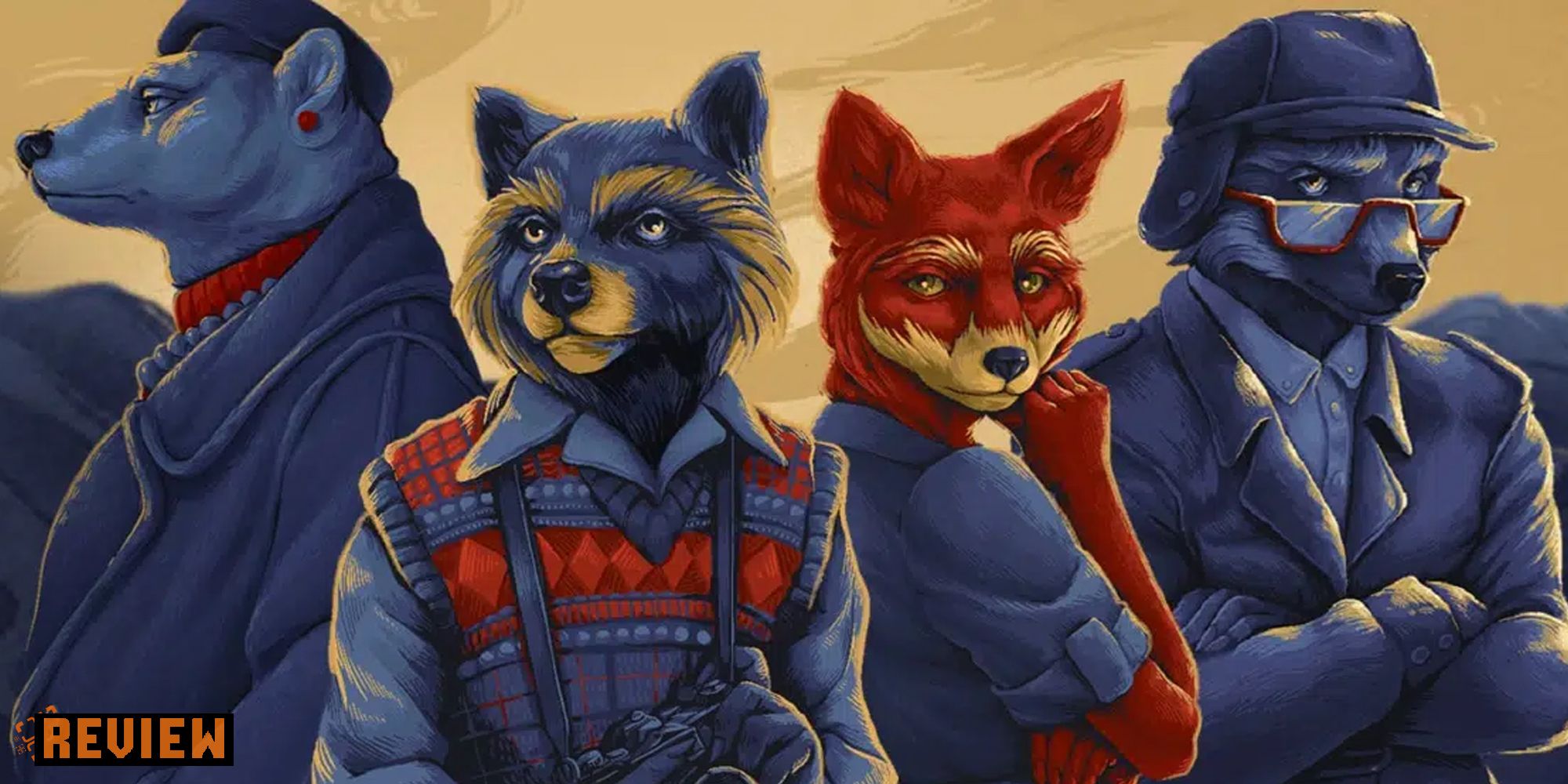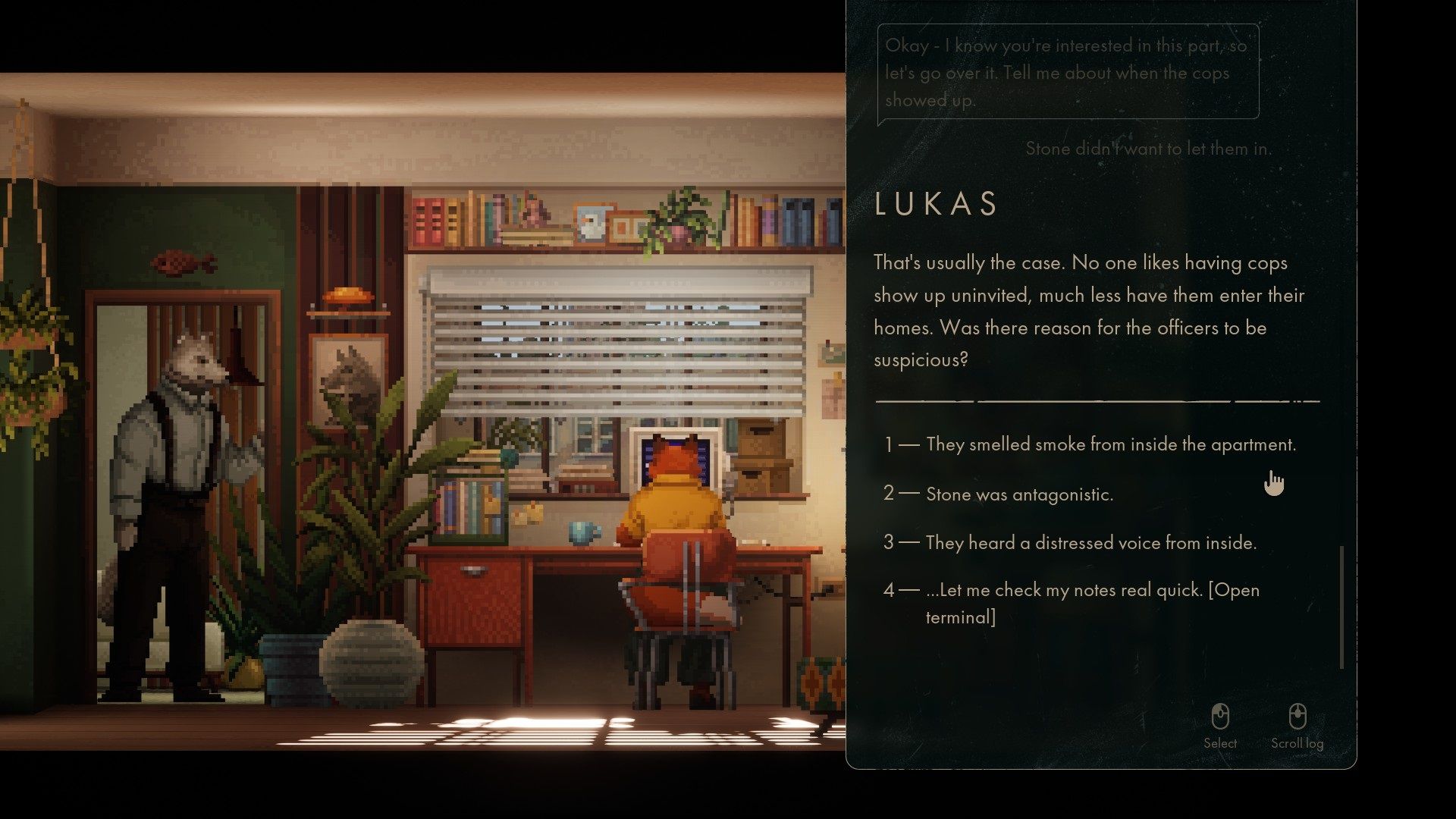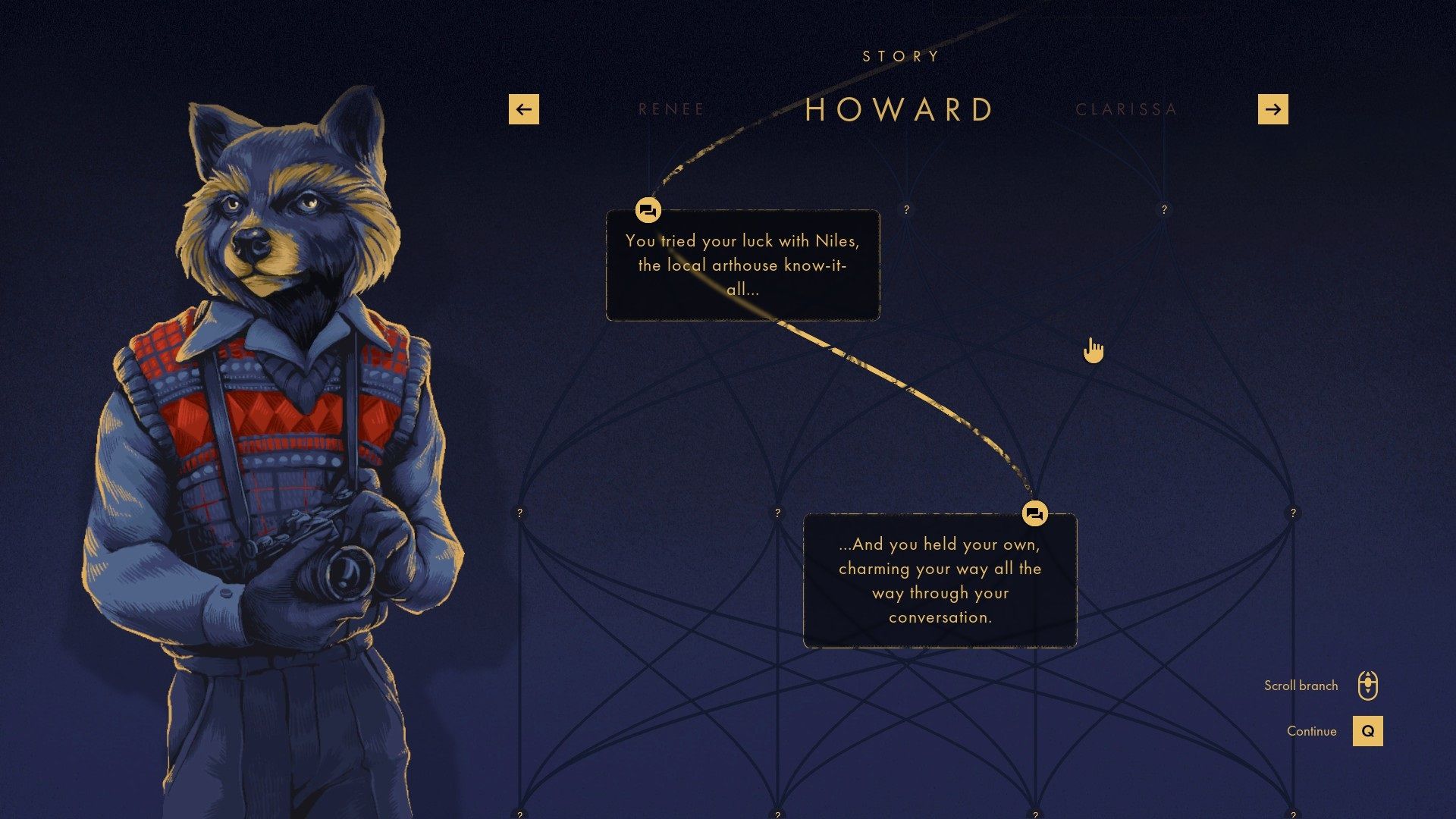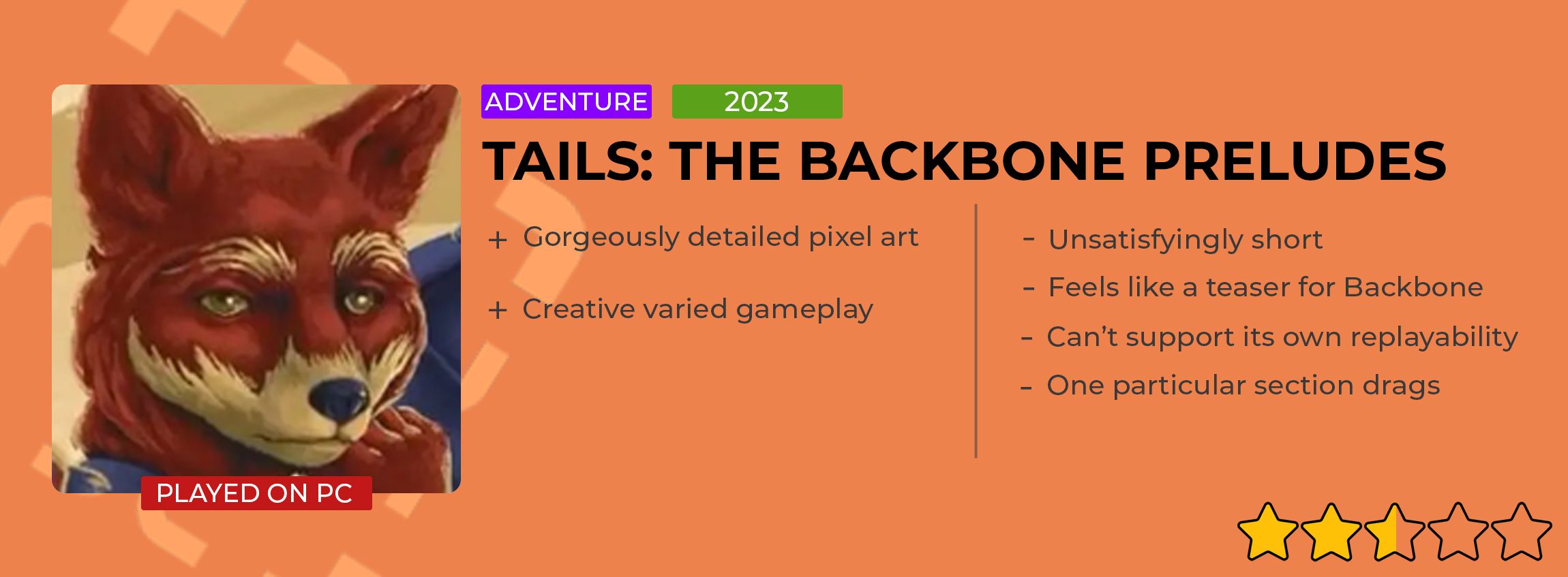I’m struggling to remember the last time I had to pay attention to very specific details in a game, beyond battle mechanics or the general awareness of plodding along and pressing buttons. In many puzzle games, you can always resort to trying different combinations until one works, even if you don’t fully grasp the situation, but few games force your thinking cap down on your head and loiter over you menacingly, making sure you take note of what you’re reading on the screen.
An early moment in Tails: The Backbone Preludes is the perfect example of this. As Renee, you access her computer to view all the case files and reports regarding a disturbance and fire that she’s been investigating. It’s not light reading by any means, and at first glance, you might even dismiss it as the usual essay-length lore that’s just there to build the world or story a little, but you’d be wrong.
Shortly afterward, you’ll find yourself discussing the case with her husband Lukas and trying to convince him that certain things don’t add up. This is where you quickly learn that paying attention is important, as you need to know the specific details to thoroughly convince Lukas. Tails has branching outcomes based on your choices, and while you can progress even if you get some things wrong, you won’t be getting the best result for each character by half-assing it.
Not every segment of the game is this involved, and it certainly doesn’t bill itself as a puzzle game. Some sections feel far more narrative driven, where you’re clicking through conversations to usher the story along. You’re still making choices when it comes to the dialogue, which in turn shapes your character’s path, but you’re not really interacting with the world around you or having to solve problems.
Tails is a prequel to 2021’s Backbone and is set in the same dystopian version of Vancouver, inhabited by anthropomorphic animals. It once again features breathtakingly detailed pixel art that you can’t help but marvel at. Everything is so painstakingly put together with pixels reflecting the lights when you switch a lamp on, or rain droplets fuzzing up the screen. It’s one of the most beautiful pixel art games I’ve ever played.
Tails focuses on four characters, Howard (the protagonist of Backbone), Clarissa and Renee (both of whom are also in Backbone), and a new character named Eli. You switch between the four periodically, so you’ll do a scene from Clarissa’s childhood, then move on to Howard at university, then Renee, then Eli, until you loop back around to Clarissa when she’s a bit older. It’s an effective way to present the passing of time for each character, which, when combined with the varied gameplay of puzzle-solving and more dialogue-focused scenes, keeps you on your toes.
Gameplay is tailored to your choices — everything you experience changes depending on each dialogue choice you make and every action you take. I found myself in the fortunate position where a colleague was also playing the game so we could compare our choices and commiserate over shared mistakes. We laughed about who we chose to flirt with, lamented our inability to get the best ending for Eli, and, while I played Howard’s photography assignment straight, Ryan got creative and graffiti’d ‘cock’ before taking his picture. It’s those little differences that make it something special, meaning Tails is the perfect game to play at the same time as a friend.
The outcomes of your choices are represented at the end of each character segment, where you can see the branching paths and eventually receive a summary of what happened to each character. In New Game Plus, your data is retained so you can fill each path and see where different plot threads split off. You’re probably thinking that a game with four separate characters is bound to have those plot threads converge at some point, right? Wrong.
This is one of two things that feels rather unsatisfying about the game. The other is that it’s woefully short and leaves you without a sense of closure for the most part. Just around the time things are heating up, the game draws to what feels like an abrupt end. It’s clear that the characters all go on to play their part in a larger story arc, but it’s disappointing that we don’t see any of that come to fruition in this title, and you’ll have to check out Backbone to get a conclusion.
Tails bills itself as “built to be replayed” and you can indeed squeeze some more playtime out of it by replaying and picking different choices, but it feels like it relies on its replayability far too much, especially when replaying means tackling one act that has you walking for a while without much interesting going on, just to walk all the way back at the end of it. I wanted to see if I could get a better ending for Eli, but the thought of that dreary scene alone was enough to put me off, and without chapter select, you’re forced to replay the whole thing to see different outcomes. I enjoyed the game, but not enough to sit through that scene again.
Tails: The Backbone Preludes is a beautiful game with an intriguing plot and some absolutely fantastic puzzle mechanics, but it does itself the disservice of playing second fiddle to its predecessor. It’s too brief and leaves too much unsaid to feel like a game in its own right. It’s as though it aimed too low and decided to settle for being a teaser or demo that’s made to tempt players to jump into the full story of Backbone, rather than take on a role of a fully-fledged game in its own right.
Score: 2.5/5. A PC review code was provided by the publisher.





